Hanging baskets are a great natural decoration for your home and yard. They can be used to create a sense of depth in the landscape and brighten up darker spaces because they are placed off the ground at eye level or above. Often underrated, hanging baskets are also indoor-friendly, in the sense that they won’t mess with your overall interior design and furniture placement.
However, there is one thing that gives some people pause about growing hanging baskets in or around their house, which is the longevity of these colorful displays.

When choosing the most suitable plants for your hanging baskets, there are a few boxes that you should check. The best plant for your living room or front garden should fall under one of these three categories: a thriller, spiller, or filler plant.
Thriller plants are usually tall and grow upright. They add height to the container and basket, drawing people’s eyes toward them.
Meanwhile, spiller plants literally “spill” and grow around the edge of the container. Finally, filler plants generally will grow and fill most spaces inside the container.
Table of Contents
Annuals or Perennials for Hanging Baskets?
The answer to this question may be different depending on where you live, but in general, plants that grow and complete their life cycle in one year will provide you with the most color for your display.
In more northern climates, you will see these plants categorized as annuals. They are typically natives of warmer regions that grow when started indoors with enough heat, flourish during the warmest months, then perish with the onset of freezing temperatures. Popular examples are discussed in this article.
Perennials, on the other hand, will survive over the winters to grow and flower for two or more years. They have a shorter season of bloom, typically a few days to a few weeks, but may possess other characteristics that make them valuable garden plants.
Perennials may also be used in hanging baskets, but most often as accent plants because of their colorful leaves or growth habits.
Common examples of perennials in hanging displays are Heucheras, English ivy, dwarf grasses, and Lysimachia.
No matter which plants you choose, always go for colorful plants that suit the sun location you will grow them in. With that said, here are 11 of the best annual plants you can grow in hanging baskets:
1. Calibrachoas
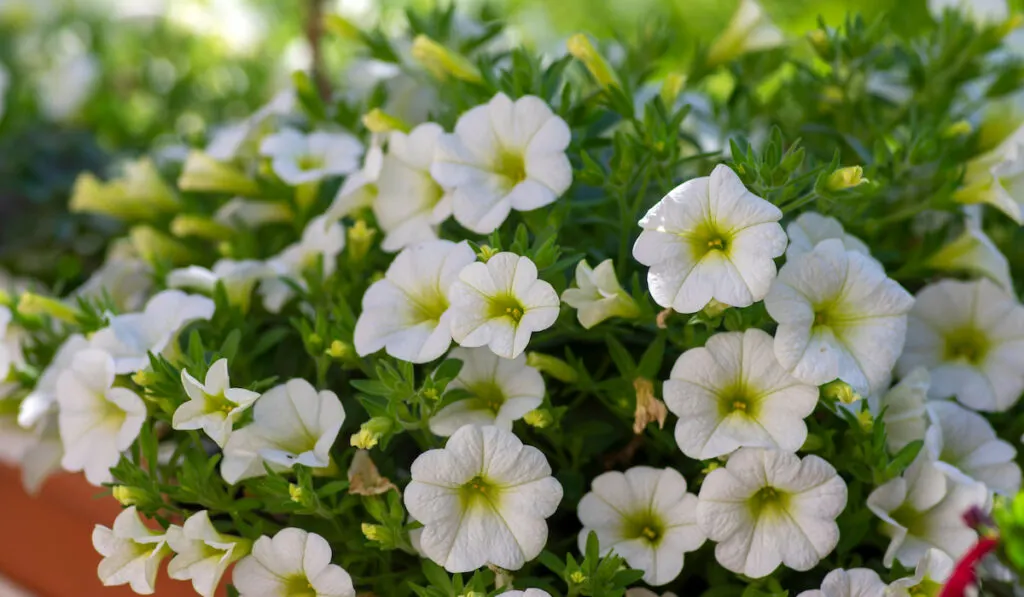
Commonly known as the “million bells”, Calibrachoas are herbaceous annual plants that resemble petunias, only slightly smaller. They are native to the open grasslands of South America, Southern Brazil, Chile, and Peru. These sun-loving plants can grow between 8 and 10 inches tall with a spread that reaches up to 2 feet horizontally.
Being fast growers, Calibrochoas require more nutrients, sun, water, and any other annuals. During their blooming season, these plants produce flowers that come in different colors such as pink, yellow, blue, orange, cream, lavender, burgundy, coral, and purple.
Although they are considered warm climate lovers, Calibrochoas perform best under partial shade to full sun in well-drained and moist soil.
2. Lantana montevidensis
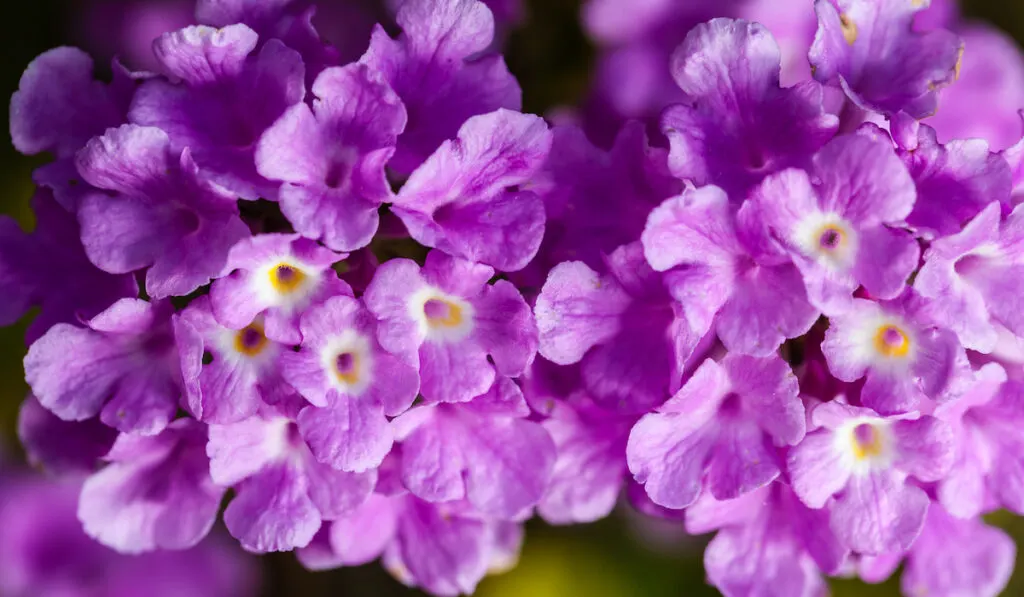
Lantana montevidensis is native to a few regions in South America including Argentina, Bolivia, Paraguay, Uruguay, and southern Brazil. In the United States, these plants are pollinator-attractors (mostly butterflies and bees) and bloom most of the time in Southern California.
Lantanas are also known as creeping lantanas, trailing lantanas, weeping lantanas, and trailing shrub verbena. They generally grow up to 2 feet and with a spread of around 10 feet wide.
These plants will produce aromatic lilac-purple flowers with circular heads that measure around 1 ½ inch. They have slightly scented leaves that are small and hairy. Lantanas usually bloom from June right until the winter.
They thrive in dry, well-drained soil and under full sun. These plants are definitely the best choice of cascading plant to complement your hanging baskets.
3. Osteospermum
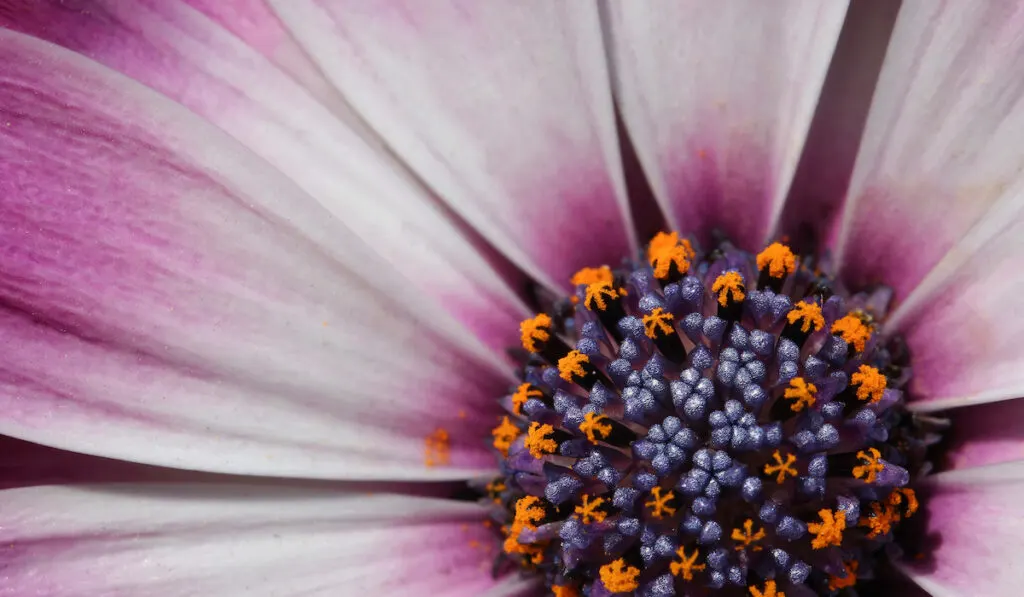
Osteospermums are hardy perennials in their native South Africa. They are commonly known as Cape Daisies or African Daisies. These plants generally grow between 1 and 3 feet tall with a spread between 1 and 2 feet wide.
Osteospermums were not popular among gardeners and florists until they became commercially available worldwide in the last decade.
These low-growing shrubs usually bloom in the late spring. During this period, they will produce daisy-like flowers that come in different colors such as white, pink, purple, yellow, orange, and bicolor.
Being low-maintenance plants, they are perfect to be cultivated in hanging baskets or larger outdoor containers. Osteopermums also thrive in moist, well-drained soil and under full sun.
4. Dianthus
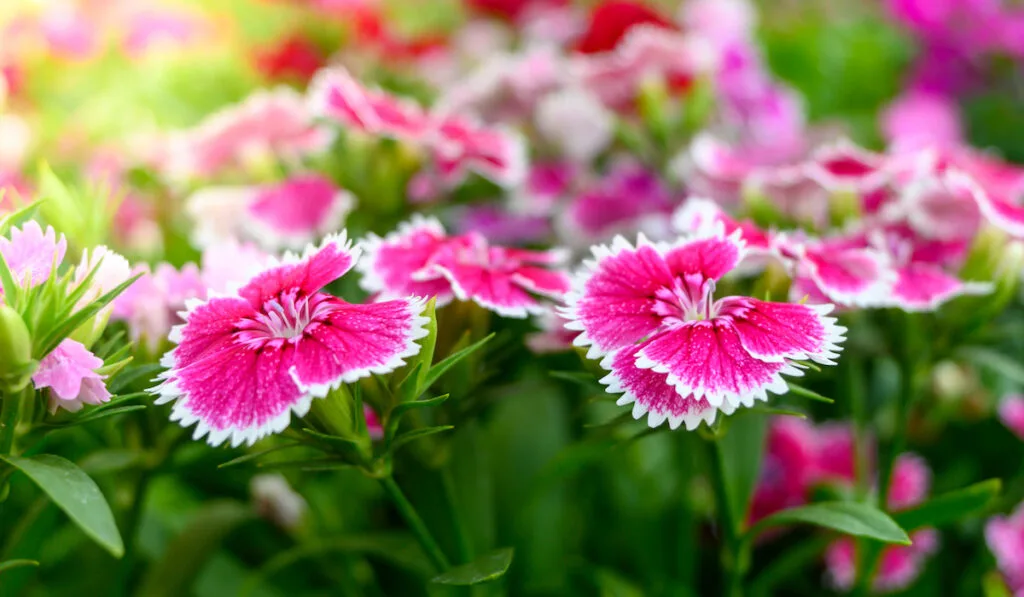
Dianthus can be found in many parts of the world including Europe, Asia, and Africa. They also go by their other names such as pinks, cheddar pinks, clove pinks, garden pinks, and gillyflower.
These spreading plants can grow from 1 to 3 feet tall with a spread between 4 and 18 inches wide depending on the variety. Their foliage forms a dense cushy mat from which the flowers extend up in a colorful display.
They bloom in the summer and spring with starry-shaped flowers that come in the colors of pink, lilac, red, white, and yellow.
They are easy to grow and require moist, well-drained soil with enough exposure to full sun. One thing to note is that these plants are toxic to pets. So, place them in a place that is unreachable by animals.
5. Geraniums
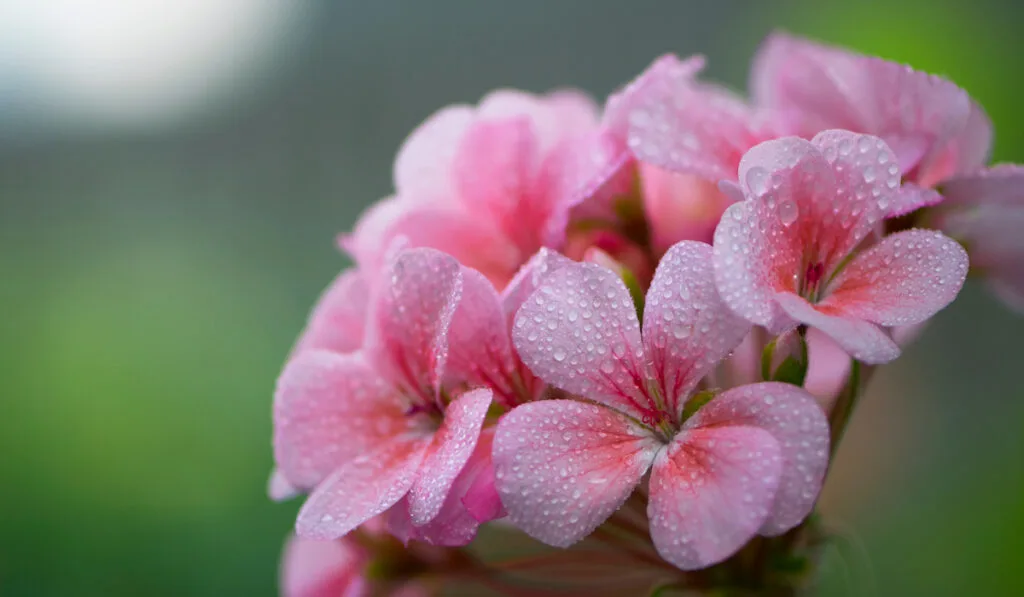
These colorful plants originated in the eastern part of the Mediterranean and tropical mountains. The perennial geranium, or cranesbill geranium, looks very different from the annual varieties and is a staple in classic perennial gardens for its hardiness.
There are six categories of annual geraniums that perform well in hanging baskets and containers: zonal geraniums, ivy geraniums, regal geraniums, angel geraniums, scented-leaf geraniums, and unique geraniums.
Geraniums can grow to 2 feet tall and vary in width by variety. Some dwarf cultivars are slightly smaller with an average height of 5 inches tall and a spread around 8 inches wide. Ivy geraniums specifically are best known for their trailing habit and mat-like foliage growth that suits hanging baskets well.
These plants typically bloom from the spring right until the fall. They produce five-petaled flowers grouped into brightly colored heads that come in pink, red, white, salmon-orange, reddish-black, and mauve.
Red zonal geraniums are the traditional plant associated with Memorial Day in the U.S.
6. Lotus Vine

Also known as the Golden Parrot’s Beak, pelican beak, and coral gem, these beak-like flowers are tender perennials that hail from the Canary Islands of Spain. They generally grow up between 6 and 12 inches tall with a spread between 2 and 3 inches wide.
These trailing plants can be recognized by their slender, needle-shaped leaves and exotic flowers that come in golden yellow and shades of red. The two varieties most commonly found are ‘Red Flash’ and ‘Gold Flash.’
As an excellent filler plant for hanging baskets, lotus vines thrive in moist, well-drained soil and under full sun. They have a high tolerance for acidic soil but don’t do well in colder climates.
Lotus vines tend to be disease-free, but are susceptible to a few common warm weather pests such as mealy bugs, aphids, and spider mites.
7. Fuchsias

Fuchsias are native to South and Central America, particularly in the Caribbean regions. Back in the 1700s, these exotic perennials were first discovered by a French botanist, Charles Plumier, in the Caribbean Islands. Through his discovery, he decided to name these plants after a renowned botanist that died a century before, Leonard Fuchs. Fuchsias generally grow up to 1 or 2 feet with a similar length of spread.
These shrubby plants are perfect for hanging baskets due to their drooping flowers that hang like a natural chandelier. Their flowers can be found in single or double-skirted with petal counts that reach as many as eight for each flower. The flowers also come in different colors including pink, white, maroon, blue, orange, lavender, and bicolor.
Fuchsias thrive in moist, well-drained soil with a pH level between 6 and 7. Unlike other plants in this list, these beauties perform best under partial sunlight or shade.
8. Begonias
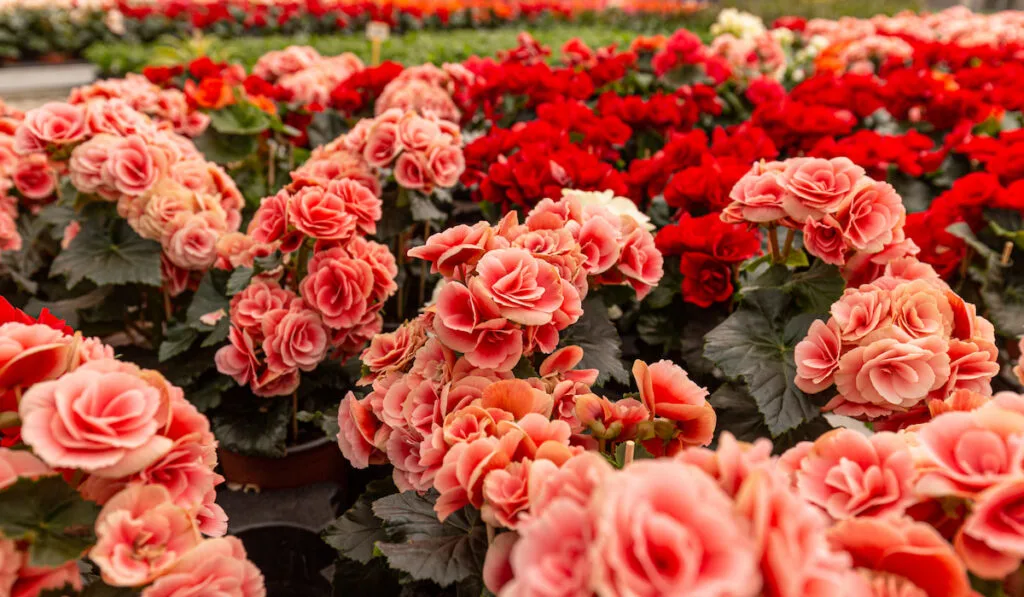
Begonias are native to tropical and subtropical climates, specifically in Asia, Central and South America, and sub-Saharan Africa. Depending on the variety, these fleshy plants can grow up 24 inches tall with a spread between 8 and 12 inches wide.
Some of the common varieties of begonias that are popularly grown as houseplants and in hanging baskets are wax begonias, tuberous begonias, and angel wing begonias.
Most begonias produce flowers that come in different colors such as white, pink, orange, and yellow. They are considered an excellent choice for hanging baskets due to their low-maintenance and drooping effect that will brighten up your garden or indoor spaces.
They thrive in moist, well-drained soil and under full or partial sun. Some begonias, particularly the waxy types are poisonous to pets and other animals.
9. Diascias
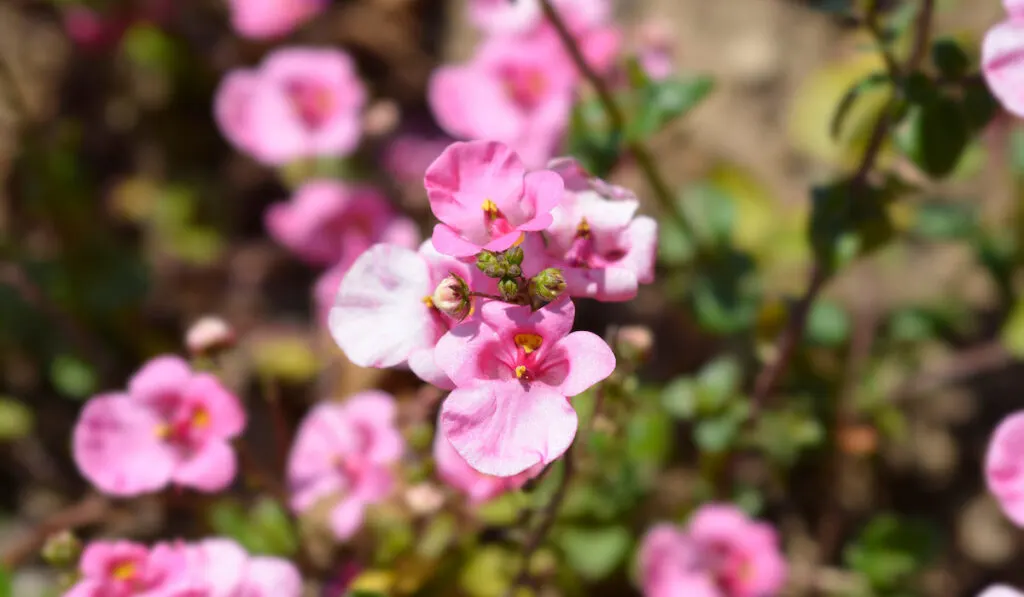
Also known as the twinspurs or Barber’s Diascias, these frothy and tender perennials are native to South Africa and neighboring regions including Western Cape, Lesotho, Drakensberg, Kwazulu-Natal, and Namaqualand. They generally grow between 1 and 3 feet tall with a spread between 1 and 2 feet wide.
Diascias are sprawling fillers with glossy, semi-evergreen leaves and shell-shaped flowers. Bees are one of the major pollinators that can be found swarming on these plants. Their flowers usually come in many colors including white, pink, red, coral, and orange. They begin to bloom in the early summer right until frost.
These plants thrive in moist, well-drained soil and under full sun. Diascias are generally disease-free, with the exception of common pests such as slugs and snails.
10. Lobelia richardii
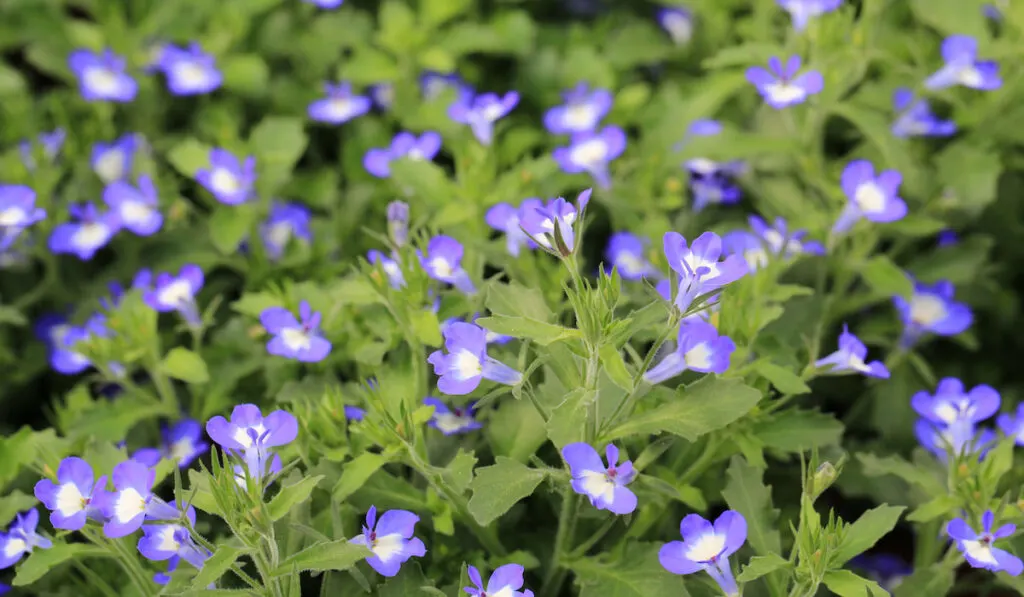
These vibrant trailing plants can be found in many warmer regions across the globe, except for Western Asia and Central and Eastern Europe. Most varieties usually grow between 3 and 5 inches tall with a spread between 8 and 12 inches wide, making them perfect candidates for hanging baskets
Lobelia richardii can be recognized by its vibrant, five-petaled electric blue flowers that provide contrast and depth of color in container designs. Some varieties also come in different colors such as rose, lilac, white, and baby blue. Lobelias specifically thrive in moist, well-drained soil under full or partial sun, they do not tolerate dry conditions well.
11. Petunias
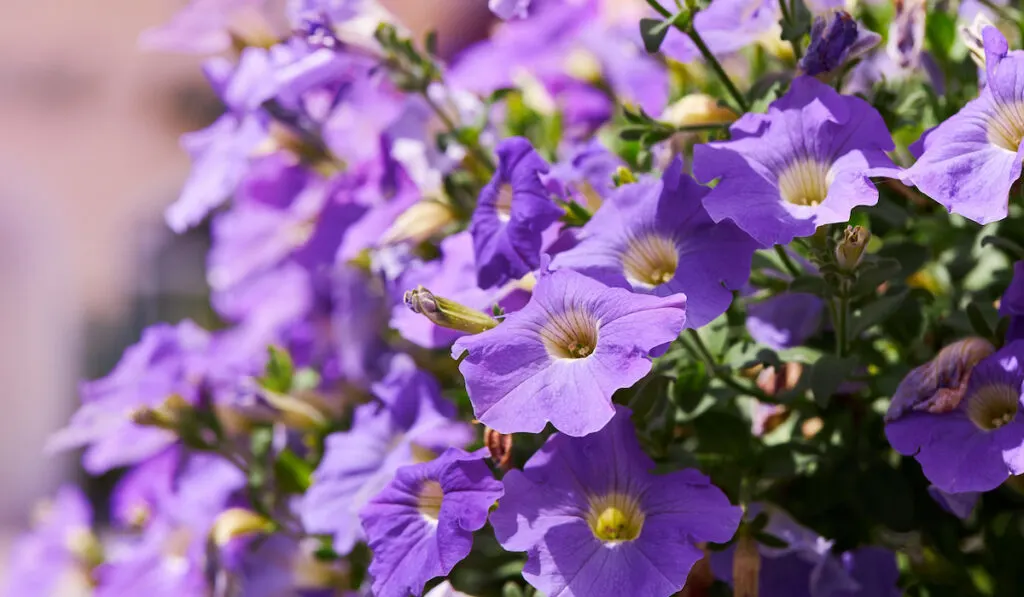
Petunias are one of the most popular garden plants today. They originated in South America and are related to other well-known plants such as tomato, potato, tobacco, deadly nightshade, and chili pepper. They generally grow between 6 and 24 inches tall with a spread up to 36 inches wide.
Petunias typically bloom in the spring, summer, and fall. Their bell-shaped flowers are available in many colors ranging from pink, white, purple, and red, to yellow, green, and orange. These plants perform best in moist, well-drained, and slightly acidic soil. Being fast-growers, they are easy to maintain and can tolerate partial or full sun.
There are two types of Petunias that you can use in hanging baskets, which are multiflora and grandiflora Petunias. Grandiflora is your best bet for hanging baskets due to their large blooms. Meanwhile, multiflora is much more suitable for large containers and garden beds as a front of the border groundcover.
Final Thoughts
Growing annual plants in your hanging baskets is one of the best decisions that you can make for your place of comfort. Aside from producing beautiful flowers and foliage throughout their whole blooming seasons, these plants are also cost-effective and easier to maintain.
Like any other plant, be sure to provide your plants with all the nutrients, sunlight, and water they need to keep them thriving.
Citations
- https://www.gardeningknowhow.com/ornamental/flowers/million-bells/calibrachoa-million-bells.htm
- https://www.missouribotanicalgarden.org/PlantFinder/PlantFinderDetails.aspx?taxonid=287465
- https://www.lifeisagarden.co.za/african-daisy-osteospermum/
- https://www.thespruce.com/perennial-dianthus-flower-1316045
- https://www.gardendesign.com/flowers/geranium.html
- https://homeguides.sfgate.com/care-lotus-fire-vines-69695.html
- https://www.thespruce.com/fuchsia-great-container-plant-for-shade-847937
- https://www.gardendesign.com/plants/begonia.html
- https://www.seasonalgardening.co.uk/tender_annuals/diascia.asp
- https://www.gardendesign.com/plants/lobelia.html
- https://www.hgtv.com/outdoors/landscaping-and-hardscaping/growing-petunias
